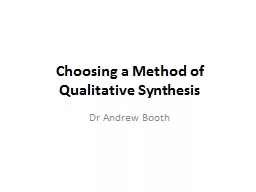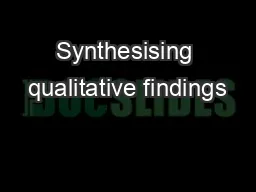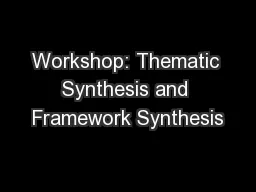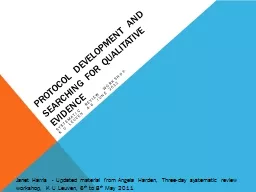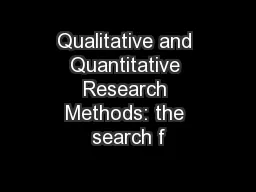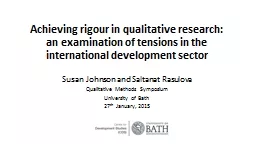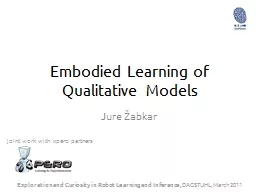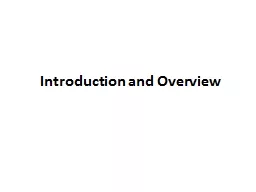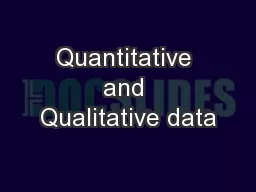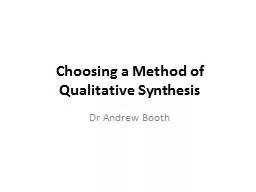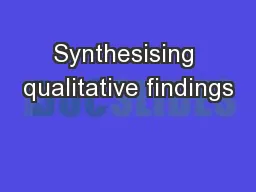PPT-Choosing a Method of Qualitative Synthesis
Author : luanne-stotts | Published Date : 2016-07-24
Dr Andrew Booth Caveat Reviewer Pandoras Box Confusing Terminology Variety of Choices Qualitative Systematic Review Qualitative MetaSynthesis Qualitative Research
Presentation Embed Code
Download Presentation
Download Presentation The PPT/PDF document "Choosing a Method of Qualitative Synthes..." is the property of its rightful owner. Permission is granted to download and print the materials on this website for personal, non-commercial use only, and to display it on your personal computer provided you do not modify the materials and that you retain all copyright notices contained in the materials. By downloading content from our website, you accept the terms of this agreement.
Choosing a Method of Qualitative Synthesis: Transcript
Download Rules Of Document
"Choosing a Method of Qualitative Synthesis"The content belongs to its owner. You may download and print it for personal use, without modification, and keep all copyright notices. By downloading, you agree to these terms.
Related Documents

